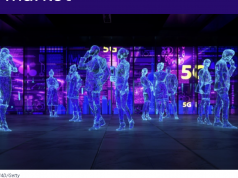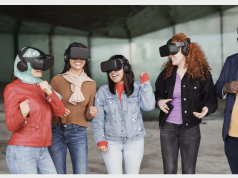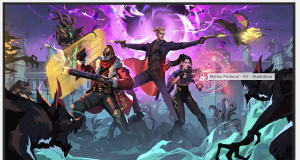Pay to Earn
Published 8 February 2022 – ID G00760276 By David Furlonger, Christophe Uzureau, Rajesh Kandaswamy
The metaverse will provide economic opportunities using new kinds of digital business assets and value exchange models. Executive leaders should augment their digital transformation strategy by exploring virtual world product development, brand placement, customer engagement and financial flows.
Additional Perspectives
- Summary Translation: Quick Answer: How to Increase Customer Engagement and Drive Revenue in the Metaverse(25 February 2022)
Quick Answer
How can we increase customer engagement and drive revenue in the metaverse?
- Use new forms of digital business assets to develop and accelerate programmable economic models. Enterprises experimenting with the metaverse can connect, engage with, and incentivize human and machine customers to create new value exchanges, revenue streams, and markets.
More Detail
The metaverse is made up of a collective virtual shared space, created by the convergence of virtually enhanced physical and digital reality. A metaverse is persistent, providing enhanced immersive experiences. Gartner expects that a complete metaverse will be device-independent and will not be owned by a single vendor; It will have a virtual economy, using digital business assets, enablinginteraction, play, debate, study and for conducting business (see Quick Answer: What Is a Metaverse?). A collective virtual shared space, created by the convergence of virtually enhanced physical and digital reality. A metaverse is persistent, providing enhanced immersive experiences.In 2021, the metaverse extended the original, precursor concept of the online platform, Second Life, by providing more robust economic and customer engagement opportunities. Gaming platforms have become a natural extension of how people experience the physical world. Gaming empowers individuals and communities to interact, create content and digital products, and then social interact through play, events, entertainment, education and commercial engagement. This activity can bedirectly monetized using digital business assets (DBAs) as the enabling currencies for new business and governance models, such as play-to-earn (P2E), as part of the programmable economy (see The Programmable Economy Is Driving a New Growth Reality and Business Opportunities). The gaming industry is now worth $176 billion with 3 billion gamers globally.1 Epic Games, the makers of Fortnite, with over 80 million active users, is involved in events as part of metaverse evolution. K-pop group BTS launched one of its singles on the platform in September 2020,2 and Ariana Grande hosted in September 2021.3Recognizing this economic potential has led to a battle for corporate dominance. Facebook CEO Mark Zuckerberg rebranded Facebook as Meta and announced its virtual work environment,4 Horizons Workrooms,5 as a step toward that intent. Gaming platform Roblox (NYSE listed) describes itself as a metaverse company. NVIDIA is promoting its omniverse to enterprises,6 introducing its graphic engines and technologies to create 3D assets. These initiatives raise questions about the future openness of metaverses in the context of Web 3.0 and decentralized governance (seeMegamultinationals Are Redrawing the Rules of Geopolitics and Competition).Public interest has caused nongaming companies to pay attention. Fashion houses such as Gucci, Louis Vuitton and Burberry are trying to capitalize on everything from NFT sales, to co-opting influencers’ avatars to promote their products to new audiences. Nike recently acquired a metaverse company.7 Visa is experimenting by purchasing generative art through Anchorage Bank — a bank connected to the metaverse.8To grasp the business opportunities, executive leaders will need to gain a detailed understanding of how:
- Markets are created in these programmable economies.
- Business and financial models are executed.
- DBAs are created and used as part of customer engagement.
To put these three bullets in perspective, Figure 1 illustrates an example of the metaverse P2E business model using Cometh,9 a game where spaceships are a yield-generating NFT.Figure 1: Play-to-Earn as as Driver for Metaverse Economics

In Cometh, when other players are using their spaceships as part of the game, owners earn tokens from mining asteroids and from increases in valuation of the spaceship (NFT digital business asset).Customers of games like Cometh want economic offerings and value propositions that traditional brands may not be targeting and that they cannot currently fulfill. They operate online on their terms, and expect digital products and value that are more portable across digital environments. Two-thirds of Roblox and Fortnite users are young adults who are prepared to spend money. For example, in Roblox’s Adopt Me, annual tourist visits number 1.4 billion with around 64 million active monthly users.10,11 Moreover, although network effects created by large digital platforms and their walled gardens cannot be dismissed, customer demand is driving Web 2.0 participants toward Web 3.0 capabilities using DBAs enabled by blockchain technologies. Customers using games like Sandbox and Cometh require more decentralized governance. Specifically, they are collaborating with their own communities for fluid value creation and exchange that are less easily controllable by central actors:
- Decentraland gives its community members opportunities to self-determine the nature of their experience, including the creation, valuation, and monetization of the assets and applications used.12
- Monetary rewards earned in Axie Infinity can be extracted and used outside that game.13 Value portability removes physical market boundaries, or form factor limitations, that could impinge on commercial activity and customer experience. The advancement of AR and VR technologies will further enhance this sense of transposition.
Various attempts are being made at improving the portability of DBAs. KuCoin’s Metaverse Trading Board aims to promote DeFi and connect all metaverse tokens (e.g., Axie, Enjin and Decentraland).14Promoting open governance and investor access will accelerate the monetization and financing opportunities for metaverse participants.A growing area of financing is in the fear of missing out (FOMO) and speculation surrounding virtual land acquisitions. The land values are highly volatile and also constitute a bet on a given metaverse. However, such investments are driving experimentations in metaverse experiences, attracting well-known brands like Adidas, and creating venues for events, conferences and other large gatherings. Land is subdividable into parcels monetized via NFTs. This kind of fractionalization may afford opportunities to investors who would otherwise be excluded from investment due to the size of the initial stake required:
- Republic Realm paid $4.3 million to Atari for land in the Sandbox and over 913,000 for land in Decentraland.15,16
- Tokens.com,17 via its subsidiary Metaverse Group,18 acquired parcels of virtual land worth 618,000 MANA (as of 28 December 2021, $2.24 million at the time of the transaction) in Decentraland partly to develop a fashion district. It is planning to rent it out to other interested brands and retailers.
This is the tip of a very big monetization iceberg. As programmable digital technology drives fundamental shifts in the way economic activity is conducted and the type of monies used, the involvement of machines to facilitate, augment and transform consumption will grow. Machine customers will become increasingly active in metaverses, either to augment existing participants’ consumption or as autonomous machines (see How to Grow Digital Business to Capture a $163 Trillion Revenue Opportunity).19 As part of this programmable economy, autonomous machine customers will use DBAs to exchange value with other machine customers negotiating on behalf of enterprises and humans. Critically from a monetary standpoint, fiat currencies do not dominate in game metaverse experiences. Rather, DBAs such as REALM, Neos, Spheroid Universe, Revomon, VCOIN, MANA, SAND, Smooth Love Potion, and ENJ are the currencies of participation. This money is programmable and embedded with software that determines the conditions of the transaction. Use cases are programmed by the commercial actors, for example, Axie Infinity (AXS) for gaming and Audius (AUDIO) for music. The working practices of this software development activity are also being transformed. The metaverse advances the notion of how this work is conducted and distributed. For example, Roblox developers have earned over $575 million in the last 18 months using decentralized economic principles. Future work opportunities will combine DBAs and dApps to increase network collaboration via more flexible work contract terms and across industries. Metaverse developers are trying to break the grip of the digital giants who currently dominate the terms and conditions of employment and remuneration — if not the entire talent pool. For enterprises, all this activity raises strategic questions about where to invest, whom to invest with, and where the nexus of development activity resides. One country at the forefront of development initiatives is South Korea. Multiple Korean enterprises such as Woori Bank, Kookmin Bank, Samsung and Hyundai are launching proofs of concept (PoCs) and experimenting. And the Korean government, via the Ministry of Science and ICT, is actively influencing the evolution of its “local” metaverse constructs. It is promoting the Metaverse Alliance,20 which has over 500 corporate members, and a “metaverse academy” to provide legal support and explore intellectual property rights in the metaverse. They also provide enterprise support to address the talent gap in engineering skills required to build the programmable economy and metaverses.Executive leaders should:
- Map how value flows through different ecosystems to assess the differences between Web 2.0 and Web 3.0 worlds (see Take Control of Your Digital Acceleration by Focusing on How Value Flows Through Ecosystems).
- Plan for the issuance, use, payment, custody and exchange of DBAs that are portable across ecosystems (see Use Gartner’s Digital Business Asset Taxonomy to Plan for the Future of Money and Commerce).
- Examine the corporate activity around product placement media buying in terms of its reach and frequency (and cost, by demographic), and how to source and measure it in a programmable economy and metaverse context.
- Build competency in AI, blockchain, customer, user and especially 3D experience, avatar creation and behavior — including data capture and analysis — and learn from companies such as ZEPETO.21









